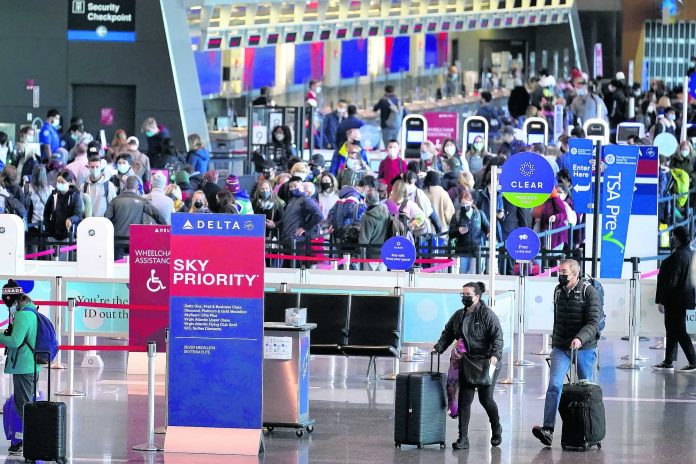
By DAMIAN J. TROISE
AP Business Writer
The airline industry’s recovery is being tested this holiday season as passengers return in near pre-pandemic numbers. The resurgence in air travel is being fueled by pent-up demand and the availability of vaccines, along with an apparent lull in virus cases since summer’s big wave. The Transportation Security Administration says that passenger checkpoints are nearly as busy now as they were in 2019, before the pandemic.
Airlines have been ramping up capacity to meet this demand, but the industry is hampered by a lagging workforce recovery. They’re struggling to hire more staff, especially air crews. That’s raised concerns that major airlines could be in for a rough December.
“Like a lot of industries, they are competing for people,” said Peter McNally, an analyst at Third Bridge. “They know what they have to do, it’s just a matter of going out and doing it.”
Major airlines encouraged thousands of workers to quit last year when air travel collapsed during the pandemic. They were barred from laying off workers as a condition of federal pandemic relief. Those workers have not returned quickly enough, leaving the current workforce stretched. In many cases flight crews are reaching their limit of allowable hours, forcing flight cancellations because there aren’t enough cabin crews.
American Airlines faced such a situation in late October when it had to cancel more than a thousand flights because it was short-staffed. Southwest Airlines also made headlines for flight cancellations in October. Both airlines cited weather problems, though analysts have said that any actual weather or air traffic issues have just made the root problem of staffing shortages worse.
“One of the problems the airlines had so far in their coverage was the unpredictable nature in booking,” McNally said. “People are booking travel with less time between booking and travel and that makes staffing harder.”
American Airlines’ labor unions warned for months that the airline was scheduling more flights than its workforce could handle.
“These cases showed just how quickly weather and now staffing shortages can ripple through airlines just as they are seeking to maximize fall revenue within exceedingly slim operational margins,” said airline industry data provider Cirium in a recent report.
American, Delta and United spent the first half of 2021 slowly recovering from the worst of the pandemic. Each airline saw modest improvements in available seat miles, a key measure of passenger capacity. That measure had nearly recovered to pre-pandemic levels by the third quarter.
The push to increase passenger capacity may have been too much for some airlines. Employment for air travel is still down more than 9% from peak levels just before the virus pandemic gutted the industry, according to Labor Department data. Staffing levels will likely have to keep increasing to help maintain flight capacity for a full revenue recovery.



















